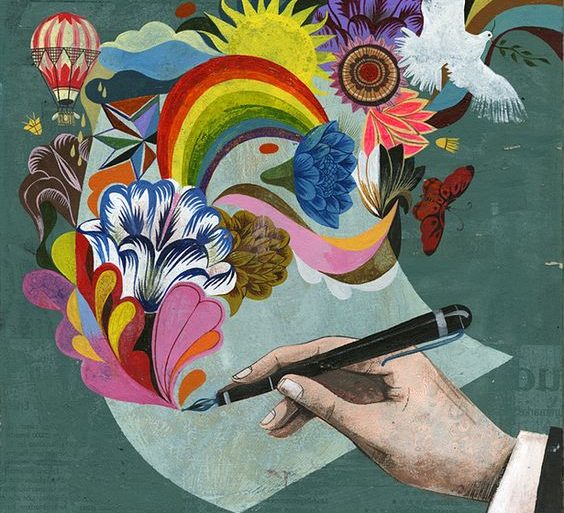What are Literary Devices? Explanation with Examples
Literary devices are tools that writers use to create the desired effect in their writing. There are many different types of literary devices, and each one has its unique purpose.
By understanding what these devices are and how to use them, you can make your writing more powerful and effective. In this article, we will discuss what literary devices are, the different types of literary devices, and how to use them effectively.
- What are literary devices?
- The purpose and importance of literary devices
- Different types of literary devices
- What is Simile?
- What is a Metaphor?
- What is Imagery?
- What is Allusion?
- What is Symbolism?
- What is Foreshadowing?
- What are Motifs?
- What is Allegory?
- What is Alliteration?
- What is Paradox?
- What is Juxtaposition?
- What is Oxymoron?
- What is Onomatopoeia?
- How to use each type of literary device effectively?
- The benefits of using literary devices in your writing
- Examples of effective use of literary devices
What are literary devices?
Literary devices are methods used by authors to enhance their writing and convey a message or emotion in a more captivating way. Literary devices can be found throughout texts of all genres, from novels to television scripts to song lyrics.
These devices add depth and complexity to what would otherwise be mundane pieces of prose by creating vivid imagery, evoking emotion, and capturing the imagination. Examples of literary devices include metaphors, similes, allegories, alliterations, puns, and foreshadowing.
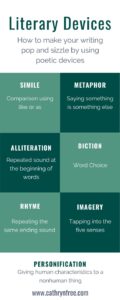
Using literary devices in your writing can add a dimension of depth and insight that will engage readers and give them a more fulfilling experience while they read.
Techniques such as imagery, similes, metaphors, and allegories are literary devices that we use to cultivate the perfect atmosphere and have the right tone for our story.
They can be effectively used to either bring out humor or create suspense. With some strategic planning, literary devices help create a vivid picture in readers’ heads that is impossible to forget.
Moreover, literary devices are also great for creating tension in stories which helps propel a reader’s curiosity further. By weaving these techniques into our writing, it allows readers to form their judgments on the story by taking away obvious points of view that could detract from its overall purpose. Literary devices can be effectively used across various genres including novels, short stories and poems.
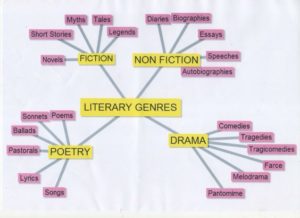
Overall literary devices are essential tools if we wish to add depth, complexity, and impact to our work and make it stand out.
The purpose and importance of literary devices
Literary devices are an integral part of the English language and literary works, helping to establish tone, theme, and narrative. Every literary device serves a purpose aiding in conveying the author’s message to the reader.
For example, alliteration is used to underscore a certain phrase or add emphasis while a metaphor can help readers understand a new perspective or understanding of a situation. It is through literary devices that authors concretely communicate an idea, theme, or story.
Furthermore, literary devices add color and depth to storytelling encouraging readers to interpret literary works on their terms.
Whether that be discovering themes or ideas behind the work or connecting with characters on an emotional level, literary devices connect the author with their audience imparting emotions, thoughts, and images throughout works of literature and speech.
Ultimately literary devices play a huge role in elevating literary works offering deeper insight into stories and allowing readers to actively participate in the interpretation of literary pieces.
Different types of literary devices
Different types of literary devices can be used in varied capacities, each adding a different flavor to the written works. For example, similes and metaphors add pictorial richness to descriptions, while onomatopoeia brings sound to life through text.
Alliteration and assonance are also two common devices used in literature. Furthermore, even something as simple as exaggeration can set the tone for a piece of writing – leaving it up to the reader’s imagination as to how far they will want to indulge in its exaggeration.
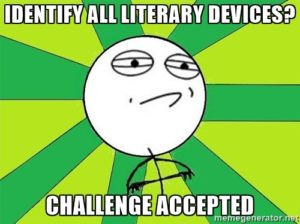
Literary devices ultimately give readers different perspectives from which they can view written works – be it humorously or emotionally – allowing them to interpret its meaning in different ways.
What is Simile?
A simile is a popular literary device used to compare two ideas or concepts that are dissimilar. It typically uses the words “like” or “as” to form an interesting comparison between otherwise unrelated concepts.
This helps authors create a vivid image and make their writing more engaging and lively. Similes can also be employed to invoke emotion, as a way of making readers relate experiences to the plot of a story or poem.
Using similes
By using similes, authors can develop plots further and elevate insights by allowing readers to feel connected to the stories they tell in new and interesting ways.
All in all, similes offer authors immense creative potential, enriching their works with beautiful descriptions that set them apart from others.
What is a Metaphor?
A metaphor is a figure of speech in which one thing is metaphorically expressed as though it were something else, making whatever it is describing seem more vivid, meaningful, and interesting.
Metaphors are powerful literary devices to make your writing more engaging and relatable. They can be used to draw a comparison between two unrelated objects or ideas to create an understanding or insight for the reader.
Using metaphor
Using metaphor in your writing allows readers to make connections that may have not been apparent before, opening the door to a new way of looking at certain topics.
Metaphors can help bring out their intended meaning more clearly, but they also offer an opportunity for creative expression that helps paint a picture in the mind of readers.
In this way, they can draw readers into the imagery and emotion of the piece being written. Metaphors are a creative way to communicate feelings and ideas with greater understanding and insight into whatever message you are trying to convey!
What is Imagery?
Imagery is an essential literary device that authors use to help their readers create imagery in their minds of what is taking place in the story.
It’s a key component in painting a vivid picture for the reader and helps them to understand a particular setting or mood within the text.
Imagery serves mainly to add depth and insight into a passage through the use of vivid language that evokes imagery and emotion.
This imagery can take many forms, such as metaphors and symbols, painting sceneries, or even tangible imagery that foreshadows events yet to come.
Using Imagery
Creative use of imagery by authors allows them to share intricate stories with their audience while also providing the readers with more room for personal interpretation.
What is Allusion?
An allusion is a literary device commonly used by authors to provide deeper meaning to their stories. An allusion is a reference to an event, person, place, or thing that may not be directly related to the story’s plot but alludes to a larger context.
For example, when an author alludes to famous works of literature such as Romeo and Juliet or The Odyssey, they are using allusion as a literary device to draw the readers’ attention towards certain themes and ideas.
Using allusions
Furthermore, allusions also allow authors to address emotions or past experiences within their stories without actually stating them. Through allusions, authors can create interesting layers of depth within their stories and make references that readers would be able to connect with.
What is Symbolism?
Symbolism as a literary device is a powerful tool for authors and playwrights alike. When symbolism is used, an object or character can take on a meaning greater than what appears on the surface.
This opens up a world of possibilities for writers to express themes, feelings, and emotions through symbolism within their stories.
Using symbolism
For instance, if a writer wants to emphasize the importance of courage, they could use the symbolism of a lion or symbolize weather patterns such as rain or fog associated with climaxes in the story.
Furthermore, symbolism differs in various cultures, which can be captivating by introducing allegories connected with the culture’s moral values.
Symbolism can also provide clarity to readers so they have an easier time grasping abstract concepts when symbols are used to illustrate them.
Taking full advantage of symbolism allows authors to truly engage their audience with deeper interpretations and messages within their stories.
What is Foreshadowing?
Foreshadowing is a literary device that creates anticipation and mystery because it foretells or forewarns about events that have yet to come. This technique can be used not just to bring the reader’s attention to what will happen, but also to surprise them.
Using foreshadowing
Writers can craft foreshadowing artfully by giving subtle hints as well as more overt suggestions of events in the future, so that upon reaching them, readers may look back on previous moments and realize they were an indication of what was to come.
In this way, foreshadowing is integral in creating suspense and tension in books and plays a key role in shaping a story’s narrative arc.
The effective use of foreshadowing brings the text alive: questions arise from readers about how certain events may unfold, further encouraging them to delve into the story.
What are Motifs?
Motifs are recurring patterns of images, ideas, and symbols that are used to convey motifs in literature. It’s a powerful literary device that serves multiple purposes.
Motifs can add depth and clarity to the plot, reveal the underlying message of a story, or even develop motifs throughout the narrative arc.
For instance, motifs such as blood or fire may be used to represent fear or danger throughout a novel. It can also be used to emphasize particular themes or how fate plays out in a story.
Using motifs
When motifs are repeatedly used with frequency and purpose within the context of a story—like motifs such as family, loyalty, and love—it can become quite clear what exactly the author is attempting to convey about his/her characters and their journey.
The unique way motifs work helps make stories come alive by giving them an extra layer of meaning that goes beyond simply conveying facts or events in prose.
What is Allegory?
Allegory is an incredibly powerful tool that has been used by writers across centuries, allowing them to communicate ideas in a way that goes beyond words.
Using allegory
As a literary device, allegory involves using symbols or personifications to present concepts, ideas, and messages in a story.
This allows the reader to draw allegorical conclusions from the narrative without having to explicate it explicitly. By using allegory, writers can tap into the imagination of their readers while incorporating complex themes and concepts.
With allegory, writers bridge the gap between systems of knowledge or ways of thinking and connect their narrative with themes that are relevant to their audience.
It’s an incredibly versatile literary technique that continues to be employed by writers today.
What is Alliteration?
Alliteration is a literary device that involves the repetition of certain sounds at the beginning of multiple words within a sentence or phrase. It can bring rhythm and familiarity to text by creating an alluring effect on readers, as alliteration reinforces ideas, making them easier to remember.
Using alliteration
It is commonly used in poetry, advertising slogans, and catchy phrases; however, alliteration has also been found throughout all forms of writing, ranging from classics such as Shakespeare’s plays to children’s nursery rhymes.
Each alliteration includes two or more words containing the same sound which creates a flow of consonance within the text. This device can significantly increase the effectiveness of any piece it is used in, and though subtle, it has become an integral part of everyday language.
What is Paradox?
The paradox is a powerful literary device that has been used by authors to captivate readers since ancient times. It is defined as a statement or situation that appears to be contradictory, yet it can be theoretically resolved when analyzed further.
Using paradox
In literature, the paradox can express paradoxical thoughts and feelings about a character or situation more effectively than logical statements could.
For instance, in “Romeo and Juliet”, Romeo conveys his confused emotions about his love for Juliet by saying “My my bounty is as boundless as the sea.
My love as deep; the more I give to thee; The more I have, for both are infinite” – paradoxically expressing both limits and infinity in the same thought. The paradox can be used in speech as well to emphasize a point or provide humor.
By paradoxically contradicting themselves, speakers can surprise listeners and draw attention to their argument or joke.
Ultimately, the paradox is effective tool authors utilize to make their work engaging while providing insight into the characters’ emotions and motives.
What is Juxtaposition?
Juxtaposition is a powerful literary device that allows readers to juxtapose two seemingly disparate elements and observe how they interact with one another in a creative juxtaposition.
The concept of juxtaposition presents different ideas, values, or contexts side-by-side to allow readers to understand their similarities and differences.
Using juxtaposition
The use of this literary device allows the juxtaposed words, characters, concepts, and images to provide insights into greater themes that may not be immediately apparent on their own.
Juxtaposition can also be used as a tool for humorous effect by placing incongruent images side-by-side to provide comic relief or juxtaposing opposites to accentuate each other’s dissimilarities.
All in all, juxtaposition provides an effective means of storytelling and establishes meaningful contrasts beneficial for any type of writing.
What is Oxymoron?
Oxymorons have always been an interesting component to explore. As a literary device, oxymorons provide great opportunities for writers to express ideas or concepts in a dichotomous manner – oxymorons often being composed of two contradictory terms.
Using oxymorons
The use of oxymorons helps you create powerful effects that can add insight into the writing and make readers pause as they try to decipher the oxymoron’s meaning.
For example, oxymorons such as “sweet sorrow” or “jumbo shrimp” allow us to see the complex nature of life through contrasts, expanding our scope for thoughtful understanding.
In addition to this, oxymorons can also be used for effect or humor purposes in literature. Regardless of purpose though, oxymorons will remain an integral part of the world of literary devices employed today.
What is Onomatopoeia?
Onomatopoeia is a powerful literary device that has been used by authors and poets for centuries to capture the readers’ attention and evoke emotion.
Onomatopeia is defined as the formation of a word based on the sound it makes, such as ‘buzz’ or ‘hiss’, and it can be used to enhance description in literature – readers can hear what they are reading on the page.
Using onomatopoeia
For example, when an author wishes to emphasize the loudness of thunder, onomatopoeia could be used – describing it with words such as ‘boom’ or ‘crash’. In doing so, onomatopoeia serves not only for its auditory purposes but also to create imagery.
When words seem to echo their meanings, ideas become more vivid in readers’ minds. Through onomatopoeia, stories come alive on paper in ways that transcend mere descriptions alone.
How to use each type of literary device effectively?
Understanding how to effectively use literary devices can take your writing to the next level, as they allow you to create deeper levels of meaning and weave creativity into texts.
Similes are a type of literary device that involves directly comparing two things, usually using like or as. When crafting a simile, it is important to choose two distinct ideas or images and pair them imaginatively for maximum impact.
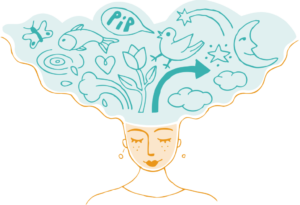
Similarly, metaphors provide insight through indirect comparison by suggesting that one thing is another. To make a metaphor stand out, think deeply about the intended comparison; the metaphor should be original and as accurate as possible.
Paradoxes also add richness to literary works through their seemingly contradictory phraseology; although paradoxes may seem puzzling at first glance, taking time to parse out the intended message leads to a more rewarding reading experience.
Juxtaposition and alliteration are also powerful literary devices that can be used for larger emphases on key aspects of the text – juxtaposition pairs two contrasting images together while alliteration focuses on repeated lettering of words nearby. Utilizing these literary techniques can certainly enhance your writing.
The benefits of using literary devices in your writing
Using literary devices in your writing is beneficial for many reasons. It brings depth to your content, allowing you to shape a more engaging story or article.
Whether you’re writing fiction or nonfiction, literary devices such as similes, metaphors, and motifs can help express emotion and create clearer imagery in the minds of readers. Furthermore, literary devices provide structure for your piece.
They can be used to introduce new topics, build suspense and leave readers surprised with each turning point of the story. Using literary devices decorates your words with meaning, which will make them come alive on the pages.
Engaging literary techniques also make it easier for readers to internalize the message being conveyed while they’re immersed in a captivating journey of words.
In short, literary devices have strong advantages – they make writing more enjoyable for both readers and writers alike!
Examples of effective use of literary devices
Literary devices have been used in popular works of literature for centuries, sparking emotions and creating deeper meanings within literary pieces. In Romeo and Juliet by William Shakespeare, literary devices are present throughout the play to emphasize the feelings behind a tragic love story.
One particular example is personification when Juliet compares love to lightning saying “My bounty is as boundless as the sea, my love as deep; the more I give to thee, the more I have, for both are infinite”.
This line gives life to her love through personification and allows readers to relate it to real-life situations. Another effective use of literary devices can be seen in Ernest Hemingway’s novel The Old Man and the Sea where repetition of words such as “strong” and “lonely” reflect Santiago’s determination yet solitude when confronting his struggle with a massive marlin he has been fighting.
Literary devices are present in popular works of literature to create an impact on readers through different perspectives.
Literary devices are powerful literary tools used to bring stories to life and evoke raw, profound emotion in readers. Understanding the different literary devices can improve our writing and enhance the level of our engagement with literary works.
As writers, using literary devices help you to create compelling stories that move readers and create a legacy of stories they will never forget and will always cherish even long after they finish reading them.

